Rittal Fixings
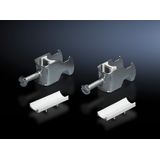

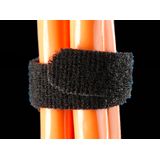
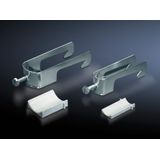
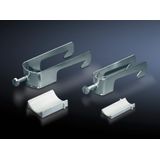
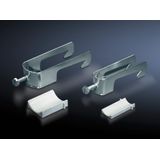
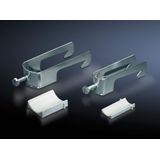
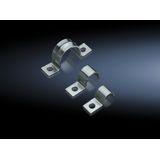

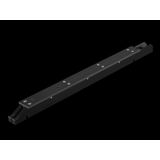
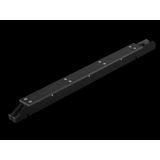
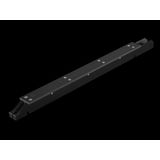
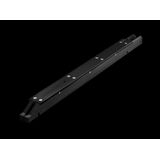
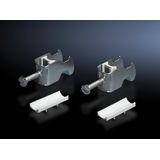

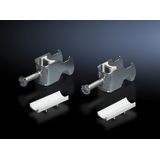
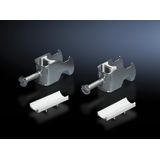
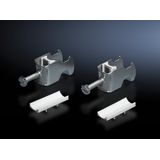
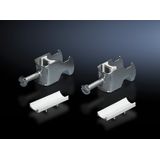

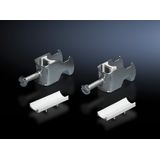

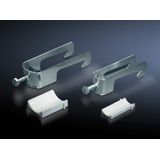





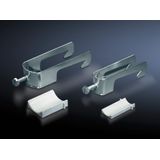
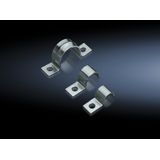


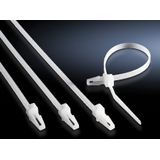

rittal fixings for secure, repeatable cabinet assembly
On real projects, hardware choice decides how fast panels go together and how long they stay tight. Rittal’s fixing ecosystem covers the small parts that matter—thread‑forming screws for thin sheet, cage and spring nuts for rails, serrated washers for bonding, and torque‑friendly fasteners that survive repeated service. The goal is simple: clean builds, preserved IP/EMC, and zero surprises during maintenance.
Product range and formats – rittal mounting hardware
Screws and nuts. Metric series M4–M8 with Pozidriv/Phillips, hex, and Torx heads; options in class 8.8/10.9 carbon steel (ISO 898‑1) and stainless A2/A4 for corrosive sites. Cage nuts and spring nuts slot into 19″ frames and C‑rails without drilling.
Thread‑forming & self‑tapping. For thin‑gauge steel and aluminum; reduces loose swarf in enclosures and improves thread engagement in 1.2–2.0 mm plate.
Washers and bonding hardware. Serrated/star washers, cup washers, and earthing lugs keep protective‑earth continuity reliable across painted parts; toothed surfaces bite through coatings at defined points.
Brackets and angles. L‑ and Z‑brackets, corner braces, and reinforcement plates distribute load from heavy gear (drives, PSUs) into the mounting plate without oil‑canning.
Clamps and cable fixation. Strain‑relief bars, cable clamps, and tie‑bases support EN 62444‑compliant clamping ahead of terminal rows; maintains bend radii for control/data lines.
Anchors and plugs. Wall and plinth anchoring sets for brick/concrete/gypsum; matched expansion plugs and screws provide the pull‑out strength cabinets need in facility corridors and plant rooms.
Coatings follow ISO 4042 (electro‑plated) and powder‑coat systems that resist installation damage; stainless variants carry the load where chemicals, chlorides, or coastal air would attack zinc.
Technical specifications and standards
- Mechanical classes: carbon‑steel fasteners typically 8.8/10.9; stainless grades A2‑70/A4‑70. Use class/grade matched to load and substrate.
- Torque windows: common cabinet fasteners sit around 1.5–6.0 Nm (M4–M6) and 8–12 Nm (M8) depending on head/lube; always confirm per datasheet to avoid thread pull.
- Earthing: bonding via serrated washers and PE studs; verify continuity during FAT with rail‑to‑stud readings < 0.1 Ω in line with IEC 61439 practice.
- Corrosion classes: select finishes by site risk (C1–C5). Indoors, zinc‑nickel or powder‑coat is typical; outdoors/wash‑down → A2/A4 stainless and sealed interfaces.
- Interfaces: 19″ rack rails, EN 60715 TS35/TS15 DIN rails, and Rittal C‑rails accept standardized nuts and clips; hole patterns match the enclosure punch geometry.
- EMC context: conductive paths through coated parts use tooth/serrated hardware at marked points; EMC gaskets at entries complement bonding.
Two installer tips: keep bolt lengths one or two threads proud of the nut (no bottoming), and never mix lubricant types on torque‑critical joints—values shift.
Application fit – rittal brackets and mounts
- BMS/lighting panels: spring nuts + M6 Torx accelerate DIN rail lines; bonding washers under terminal row supports maintain PE continuity.
- OEM/machinery: reinforcement plates under VFDs/PSUs; thread‑forming screws cut assembly time on thin sub‑plates without loose nuts.
- IT‑adjacent & telecoms: cage nuts for 19″ gear, cup washers for cosmetics on visible faces; keep fixings consistent across bays.
- Wall and plinth installs: matched anchors give predictable pull‑out on concrete/brick; use spreader plates on weak substrates.
Plan load paths early: heavy devices should sit near structural rails or cross‑members; fasteners are only as strong as the sheet they bite into.
Integration with other Rittal products
Fixings interface cleanly with Rittal mounting plates, depth rails, gland plates, and 19″ frames. Use the same nut/washer families cabinet‑wide so crews carry one tool set. For cable management, pair clamps and tie‑bases with Rittal routing duct; strain‑relief bars should sit just ahead of terminal blocks to shorten unsupported lengths.
Selection criteria for B2B clients
- Load & substrate — choose class 8.8/10.9 vs A2/A4 and bracket geometry for the actual lever arm and base sheet thickness.
- Platform — confirm nut style (cage/spring) against rail type (19″, C‑rail, TS35/TS15). Keep head types unified (Torx or hex) across the estate.
- Corrosion & hygiene — powder‑coat/zinc for dry interiors; stainless for food, pools, coastal air. Avoid galvanic couples between dissimilar metals.
- Bonding — specify serrated/star washers at defined points; document every PE strap in GA drawings.
- Anchoring — match anchors to substrate (concrete, brick, gypsum); check pull‑out and edge distances, especially on narrow plinths.
Procurement often standardizes one nut family (cage or spring), one head drive, and two finish types (zinc + A2) to simplify spares and tools.
Advantages of working with Bankoflamps
For project teams, we align B2B pricing and formal offers with your BOM, assign a dedicated account manager, and provide live EU‑wide stock visibility. Quotes typically arrive in about an hour. Orders are placed by EAN/MPN to avoid catalog ambiguity, and our price lists are downloadable and always current. You get lead‑time and order‑status tracking plus purchase‑history analytics to consolidate SKUs. For trusted clients we extend post‑payment terms up to 30 days. We also plan consolidated shipments to lower freight costs, keep prices stable with validity dates, and support teams in France, the Baltics, Germany, Spain, Italy, Belgium, and the Netherlands.